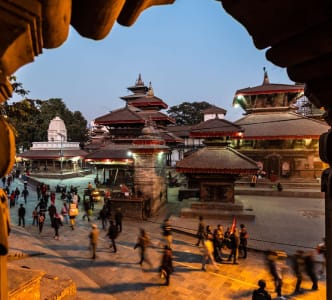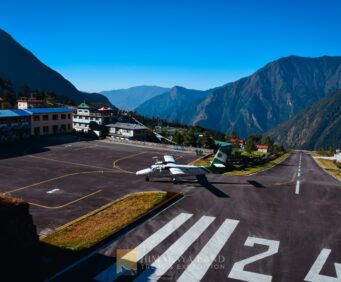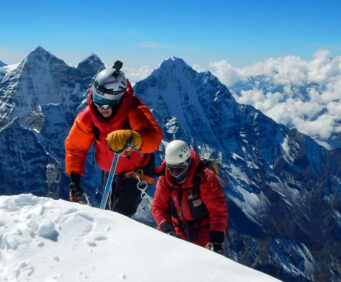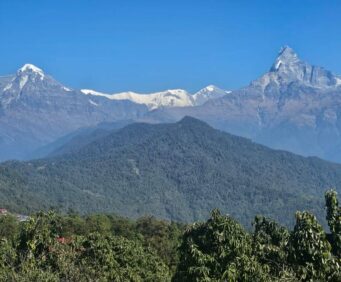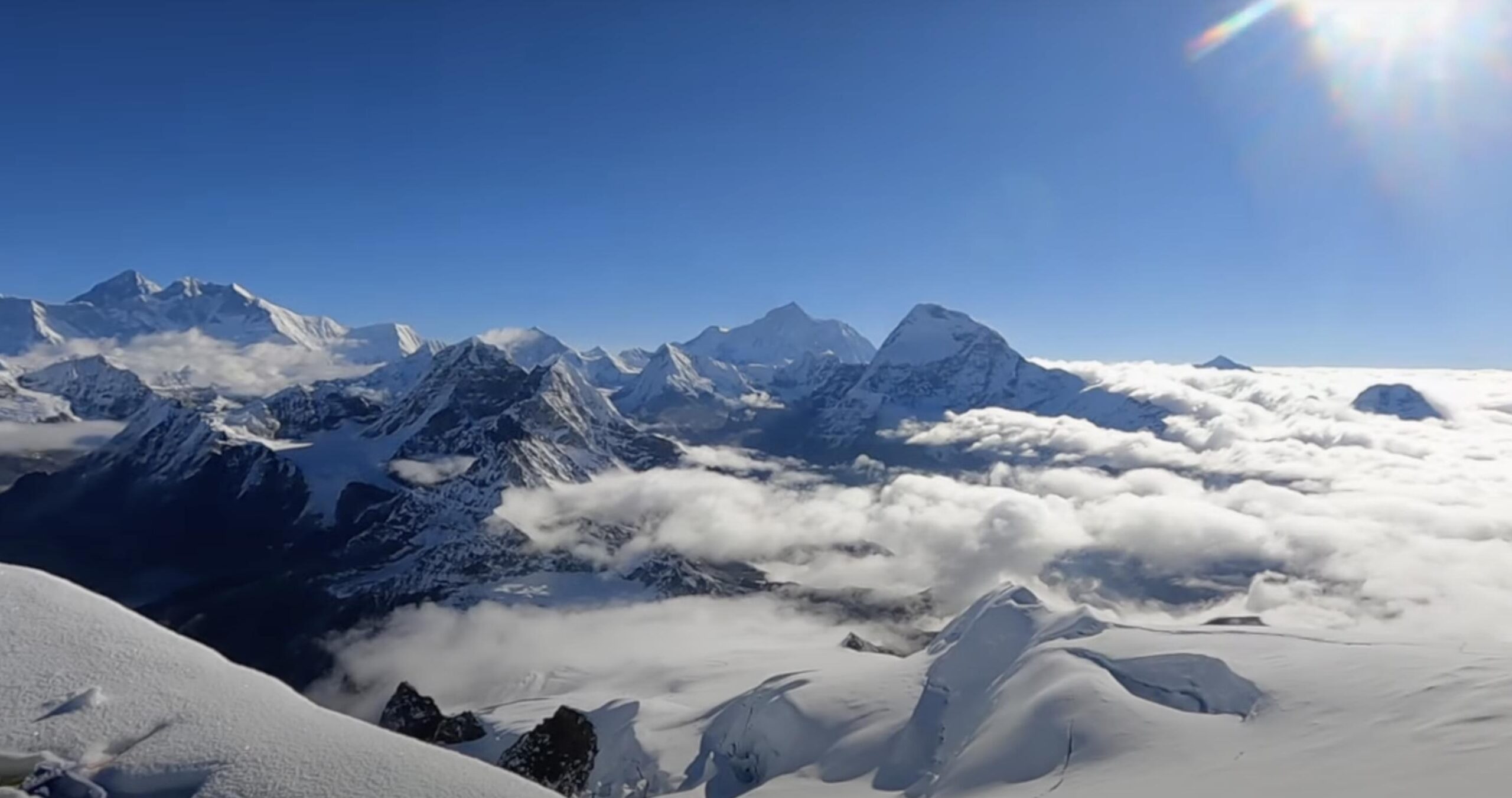
Preparations for the Mera Peak Climbing
24th March, 2024 - Posted By: Himalayan AbodeAre you planning to climb Mera Peak? Learn about essential preparations for Mera Peak Climbing. Beautiful Mera Peak is located in Makalu Barun National Park. In contrast to other hiking destinations like Island Summit, this summit is genuinely undiscovered. Days before Edmund Hilary and Tenzing Norgay reached the summit of Everest, on May 20, 1953, Sen. Tenzing and Col. Jimmy Roberts completed the first ascent. Because of its easy route to the top, the mountain has grown in popularity among hikers and climbers over the years.
You leave the Everest Base Camp route at the airfield in Lukla and enter a seldom-visited area that is solely interesting to trekkers and mountaineers. It’s an amazing hike that follows the Hinku Drangka River through forests of pine and rhododendrons. The untamed valley is home to a variety of wildlife that is not often seen on regular hiking routes, including black bears, deer, and many leopard types, including the elusive snow leopard. Even yet, it still takes luck to find one of these.
The real ascent to Mera Peak’s peak begins at Khare’s highest permanent residence. You quickly rope up and begin climbing on the Mera Glacier after starting from Khare. Spend a brief night camping at a great viewpoint halfway up the mountain, offering breathtaking views over the largest group of the highest Himalayan peaks. The nighttime push for the summit begins.
The goal is to reach the peak before daybreak, and the moderate ascent takes around five hours under the starlight, with a quick but forceful final push. Following a full 360-degree panorama of the surrounding sea of mountains, you will begin the arduous descent to Lukla.
How Should I Get Ready for the Climb of Mera Peak?
Despite being a non-technical climb, having a basic understanding of mountaineering is undoubtedly advantageous when climbing Mera Peak. There are many obstacles to overcome on the way up this mountain, both mental and physical. The hike requires a high level of physical fitness due to its elevation of 6,476 meters. Thorough cardiovascular exercise, such as jogging, cycling, and trekking, is crucial to developing the endurance required for the arduous expedition.
Crampons, ice axes, and ropes are examples of mountaineering equipment that you might practice using to get ready for the Mera Peak climb. We believe that prior experience with long-distance trekking, such as the Annapurna Circuit or the Everest Base Camp trek, is necessary to understand the requirements for such an adventure.
Honing Different Skills
You may hone your mountaineering skills even more by taking a course. You’ll be more at ease and have a greater time on the climb thanks to all of this preparation.
It’s a good idea to get a medical sports test before traveling to Nepal. This will measure vital signs like blood saturation, VO2 max, and heart health. This may be included in your total aerobic exercise regimen. You ought to visit your dentist as well. The pressure differential at altitude may exacerbate preexisting dental problems. It makes sense to have it corrected before you travel to avoid backstreet dentistry located at the top of the mountain.
The importance of mental preparation cannot be overstated. It can be difficult, therefore it helps to picture and experience some conditions in advance, such as inclement weather and physical suffering. Climbing Mera Peak will provide some Type 2 enjoyable moments. Please contact me so we can go over any of these factors if you have any questions.
Certain factors, like your body’s capacity to adjust to the high altitude of Mera Peak, are beyond your control. To help you adjust to the reduced oxygen levels in the air, the trekking itinerary is set up such that you progressively climb to higher altitudes. Although it helps, this does not ensure that you can handle things. See below for further information about altitude, acclimatization, and the identification and avoidance of altitude sickness.
Best time for the climb
Pre-monsoon (spring) and post-monsoon (fall) are considered the finest times of year to climb Mera Peak in Nepal. There are two primary climbing seasons:
1. Pre-monsoon spring
- March through May are thought to be the ideal months to climb Mera Peak.
- The temperature is lower and the weather is comparatively constant.
- The clear skies provide superb vision and breathtaking vistas of the neighboring summits.
- This time of year offers generally better climbing conditions.
2. Autumn (After Monsoon)
- September through November is another well-liked time frame for Mera Peak climbing.
- After the monsoon season, the weather is steady and the sky is clear.
- The low temperatures make this a pleasant time of year for climbing and trekking.
- The vistas are breathtaking, and the terrain is made much more beautiful by the hues of autumn.
There is less likelihood of snow and ice conditions during these seasons, and the weather is usually more predictable. It is not advised to climb during the monsoon season, which runs from June to August, because of the high risk of avalanches, intense rainfall, and challenging trekking conditions. It’s crucial to remember that Mera Peak weather might still change, so climbers should be ready for any eventualities.
Accommodations for the trip
The approach to Mera Peak is now a tea house hike, unlike a few decades ago. If you have completed the Annapurna Circuit or the Everest Base Camp climb, you should be aware that the tea houses along the Mera Peak route offer different amenities.
You shouldn’t anticipate WiFi, hot water, showers, or flushing toilets. A pleasant greeting, delectable cooked meals, and a warm woodfire are what to anticipate. Although the lodging is simple, it is cozy and appropriate for a climbing excursion.
At 4,890 meters above sea level, Khare is home to the highest tea house. We spend a few nights here on our excursion in relative comfort as we acclimate and get ready for the summit push. Before reaching the summit, one (brief) night is spent in a tent at the 5,770-meter-high Mera Peak high camp.
Preparations for Mera Peak Climbing: AMS
It’s critical to realize that anyone can get altitude sickness, regardless of age, degree of fitness, or prior experience traveling to high altitudes. These days, you can keep an eye on your health while flying with a variety of devices. An analog approach that is frequently utilized is the Lake Louise scoring card. It checks the symptoms of altitude while taking into account their severity. It’s a typical tool that guides use.
These days, the majority of mountain and trekking guides carry a blood oxygen saturation meter that also registers heart rate. These are important markers of how successfully someone adjusts to altitude. Trekking the Mera Peak Trek can result in AMS. All the information you require concerning altitude sickness is provided below.
Acute Mountain Sickness (AMS)
Acute Mountain Sickness (AMS), sometimes referred to as altitude sickness, is a medical illness that arises from exposure to low oxygen levels at elevated elevations. As its name implies, AMS is an acute form of a dangerous illness. Given the possibility for death, it must be addressed right away. The majority of people will have some moderate altitude sickness symptoms. It’s critical to recognize these signs and take action before they worsen. The many types of AMS are explained below, along with ways to lower your chance of contracting it.
Signs of AMS
Understanding how to recognize altitude sickness is crucial. The sudden increase in altitude can cause you to feel headachey, nauseous, have trouble breathing, sleeplessness, nausea, and vomiting. Altitude may exacerbate the depth and severity of these sensations, and a generalized sense of exhaustion will rob you of all joy. This could become more worse and become one of these potentially fatal situations.
HAPE
Breathing becomes difficult due to High Altitude Pulmonary Edema (HAPE), a condition where fluid builds up in the lungs. Chest tightness, a persistent cough, shortness of breath, and elevated heart rate are possible symptoms. It can be a potentially fatal condition that calls for an urgent flight to a lower altitude and, in extreme circumstances, medical attention.
HACE
The more dangerous condition known as High Altitude Cerebral Edema (HACE) is characterized by an accumulation of fluid in the brain. Severe headaches, disorientation, disarray, and changed mental status are possible symptoms. In addition, HACE is a medical emergency that needs to be treated right away.
How to avoid these problems
1. Steady Ascent
Ascending gradually is one of the best strategies to avoid AMS. When ascending to high elevations, attempt to give yourself a few days to acclimate before continuing. Your body can adjust to the lower oxygen levels thanks to this. Enough time is allotted for acclimatization on all of our treks in Nepal.
2. Maintain Hydration
Drink lots of water because dehydration can raise your chance of developing AMS. Steer clear of excessive alcohol and caffeine intake since these substances might exacerbate dehydration.
3. Nutrition
Eat a well-balanced diet that includes enough carbohydrates; stay away from large, high-fat meals. At high elevations, your body can use oxygen more effectively if you consume carbohydrates.
4. Medicines
To help avoid AMS, some people may think about taking medicine, such as acetazolamide (Diamox). Before taking any drug, get medical advice, and be mindful of any possible side effects.
5. Rest
Make sure you get adequate rest and sleep during your climb. The chance of AMS can rise with fatigue.
6. Refrain from Overdoing It
Take it slow and don’t overdo it. Pay attention to your body, and if you start to feel AMS symptoms, take a break or go to a lower altitude.
7. If Symptoms Continue, Descend
Departing to a lower altitude is necessary if you suffer symptoms of acute mountain sickness (AMS), such as headache, nausea, dizziness, or trouble breathing. It is important to not minimize or disregard symptoms.
Conclusion
It can be confusing to refer to Mera Peak as a trekking peak. It has to do with altitude in Nepal. Regardless of difficulty, all mountains below 6,600 meters are regarded as trekking peaks. Another name for Mera Peak is a “non-technical” mountain. Let’s examine both definitions and determine the appropriate classification for Mera Peak’s ascent.
While both trekking and mountaineering are outdoor pursuits that entail moving across hilly terrain, they often differ in terms of the degree of difficulty, level of technical expertise needed, and overall experience.
Recent Posts
